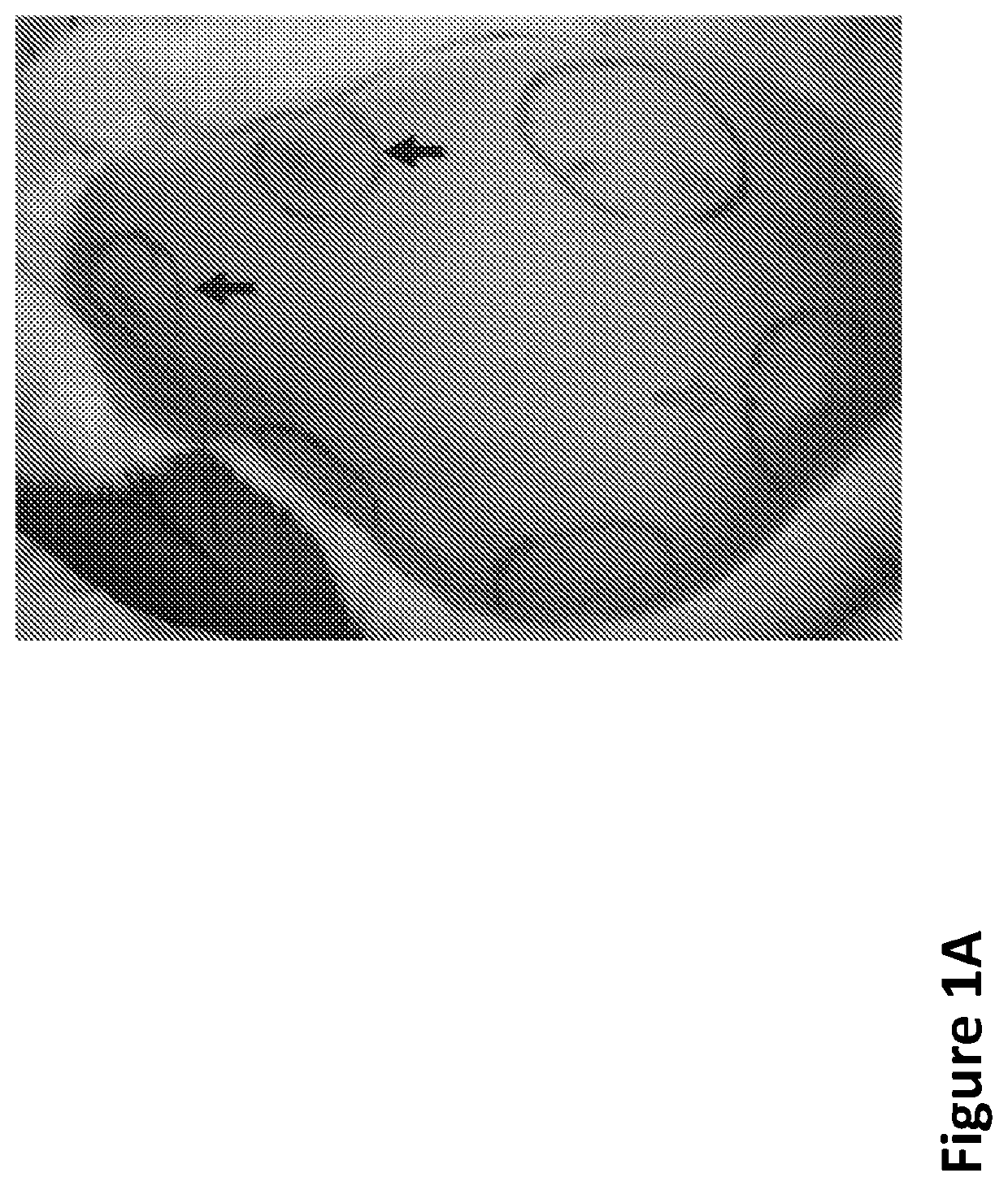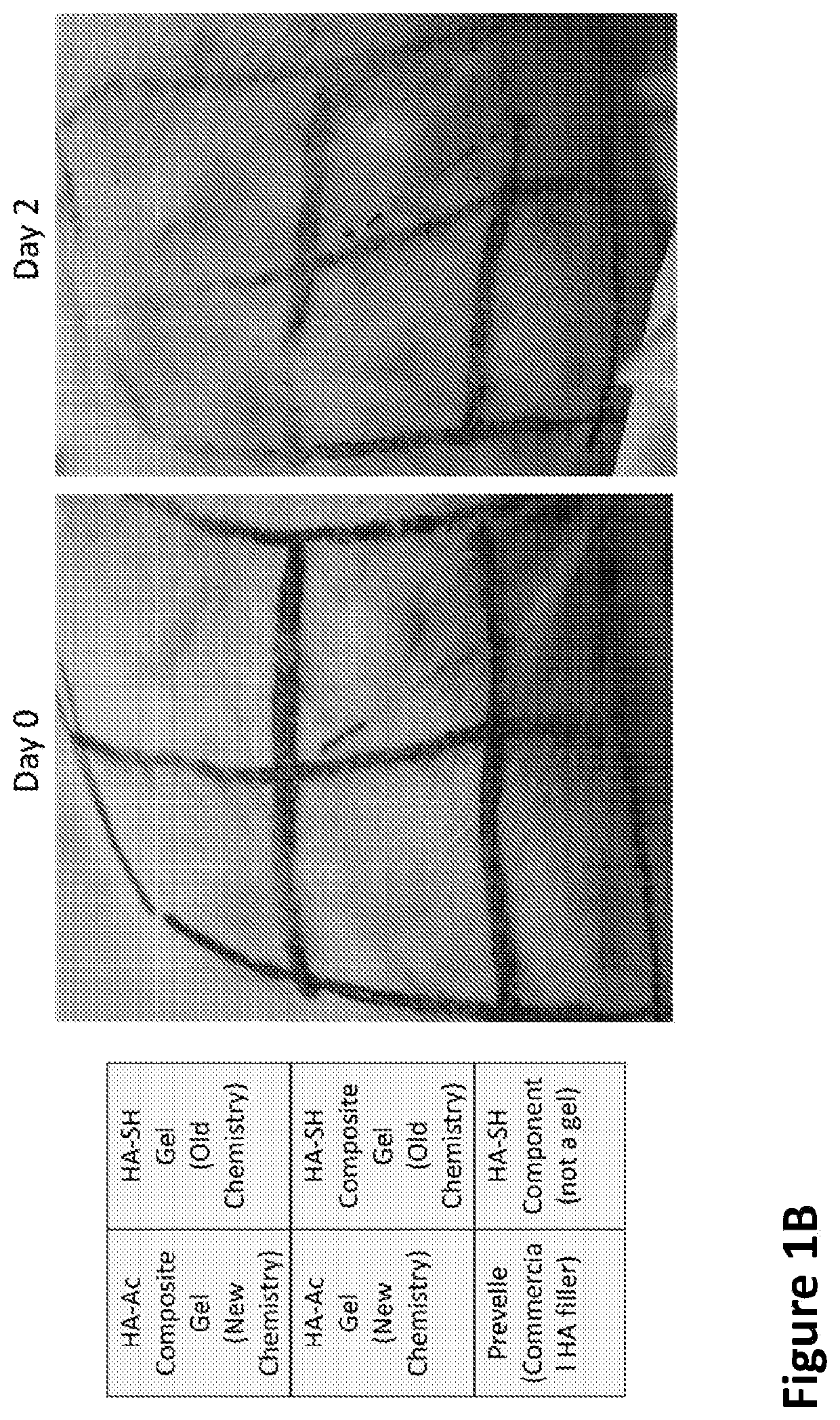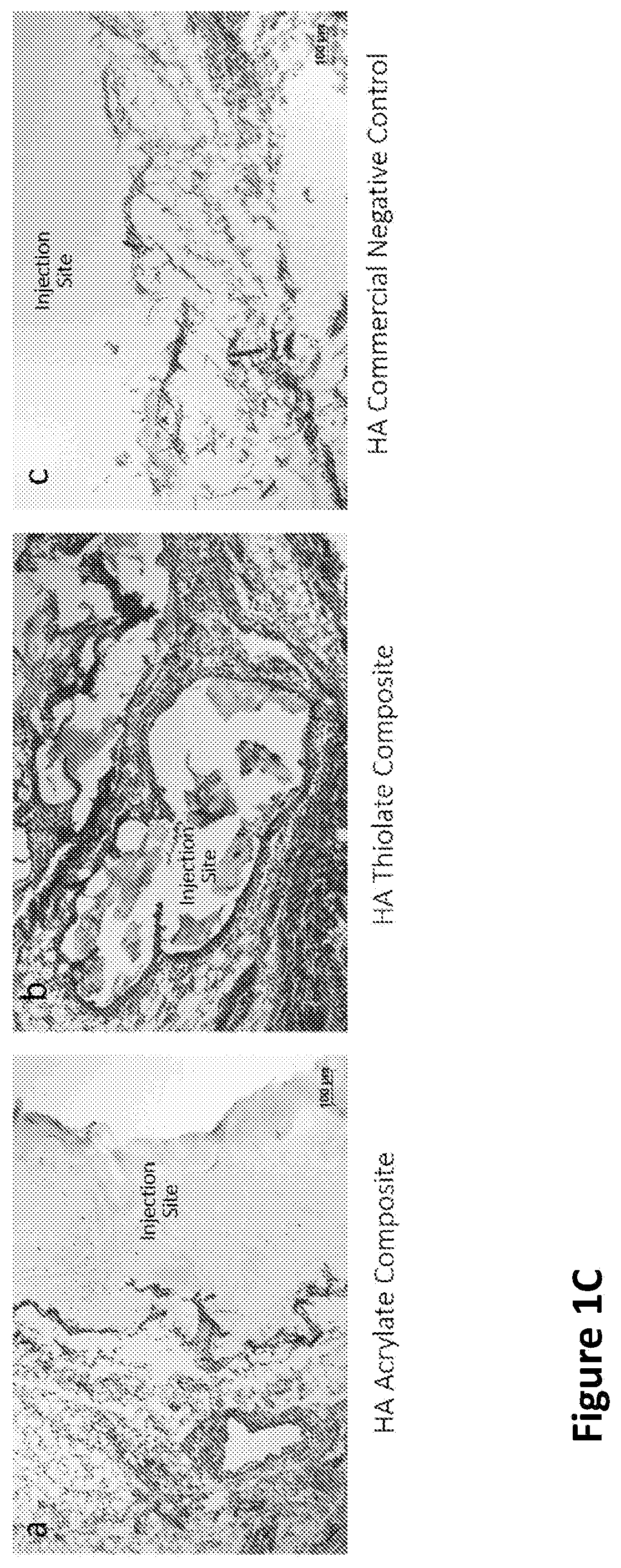Nanofiber-hydrogel composites for enhanced soft tissue replacement and regeneration
- Summary
- Abstract
- Description
- Claims
- Application Information
AI Technical Summary
Benefits of technology
Problems solved by technology
Method used
Image
Examples
example 1
orming Composite with Reduced Inflammation Profiles
[0240]An in situ-forming composite was developed comprising 5 mg / mL of thiolated HA (HA-SH), 10 mg / mL of polycaprolactone (PCL) fibers and the concentration of PEGDA set to match the thiol concentration 1:1 with the combined acrylate and maleimide concentrations (5 mg / mL). The components were mixed together to react approximately 30 minutes before surgery in order to begin gelation, with the bulk of the gelation being completed in situ.
[0241]While gelation success was achieved in vitro and in animals (rodents and rabbits by subcutaneous (s.c.) injection), the chemistry preparation utilizing the thiolated-HA caused short-term moderate inflammation when injected in the subcutaneous rabbit model. In order to produce a composite formulation with reduced inflammation, the reactive groups between the HA and PEG were reversed, keeping an earlier formulation comprising a fiber-maleimide component.
[0242]As shown in FIG. 1A, the upward arrows...
example 3
emical Characterization of Composite Beads
Determination of Size Distribution
[0251]Diameters of composite beads were measured along the longest axis of the particles under a confocal microscope image. The analysis were performed counting 51 particles. Histogram of the particles (FIG. 2G) gives the average bead size as 209.41±62.27 FIG. 2H demonstrates confocal microscope images of beads of size ˜75 μm, ˜150 μm and −200 μm by measuring the longest axis within the particle.
[0252]Further characterized bead size distribution is performed using image analysis program that will use edge detection for more consistent measurements.
[0253]In some embodiments, different mesh size sieves used to process the bulk composite can yield to different histograms for the bead sizes.
[0254]In an alternative embodiment, SEM (Scanning Electron Microscopy) is used to image composite beads. Staining of the hydrogel or fibers may be required during the imaging process.
Assessing Injectability Based on Size of t...
example 8
Assessment with MRI in Rat Model
[0294]The fully-reacted, particulated formulation of the LS series of the composite beads described above shows superior swelling properties when compared to commercial subdermal fillers such as Juvedérm. Specifically, the significant post-procedure swelling observed with Juvedérm injection in the rodent MRI model is not seen with the LS composite, enabling more of a “what you see is what you get” appearance that is desired by clinicians. Continued optimization of HA concentrations, fiber loading, and crosslinking for the current particulated composite form is ongoing and are expected to restore comparable durability to existing commercial standards while retaining enhanced volumization, lessened swelling, and more natural feel. The degree of swelling has been characterized and plotted in FIG. 6A-C.
[0295]Tan δ quantifies the balance between energy loss and storage. A higher Tan δ indicates more liquid-like properties, whereas lower tan δ suggests more...
PUM
| Property | Measurement | Unit |
|---|---|---|
| Length | aaaaa | aaaaa |
| Length | aaaaa | aaaaa |
| Length | aaaaa | aaaaa |
Abstract
Description
Claims
Application Information
 Login to View More
Login to View More - R&D
- Intellectual Property
- Life Sciences
- Materials
- Tech Scout
- Unparalleled Data Quality
- Higher Quality Content
- 60% Fewer Hallucinations
Browse by: Latest US Patents, China's latest patents, Technical Efficacy Thesaurus, Application Domain, Technology Topic, Popular Technical Reports.
© 2025 PatSnap. All rights reserved.Legal|Privacy policy|Modern Slavery Act Transparency Statement|Sitemap|About US| Contact US: help@patsnap.com



